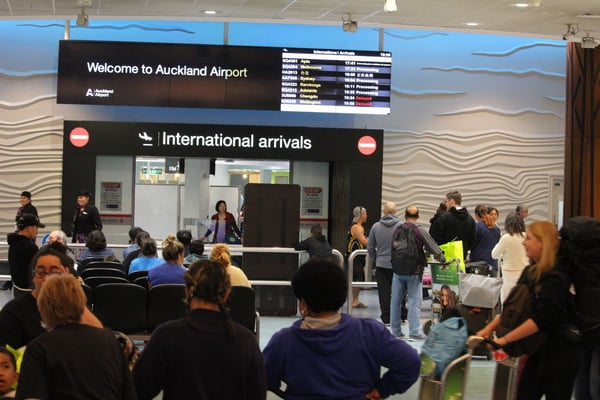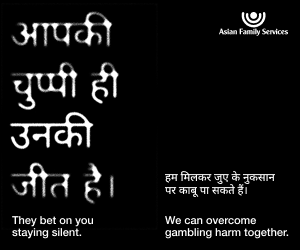NZ border reopening will spark range of emotions

When New Zealand borders finally re-open fully with the rest of the world on July 31, a range of emotions is going to be stirred.
For many, it would bring a sense of jubilation about the final removal of restrictions on entry into New Zealand or possibly of euphoria for seeing the end of one of the most severe and unprecedented travel restrictions experienced by the current generation of New Zealanders.
However, for many people, the day will bring back the sombre and harrowing experience of March 19, 2020, when Prime Minister Jacinda Ardern came out at a media conference and announced the dramatic closure of borders from midnight.
Many then thought that it was probably the state’s biggest intrusion into individual rights as ever experienced by New Zealanders. It was only a few days later that New Zealanders found out that the state was gearing up even further to encroach upon individual freedoms by restricting the basic right of free movement - in the form of a complete lockdown.
The entire country chose to rally behind the government, fully understanding the grave danger that faced the world in the form of the novel Coronavirus, barring a minuscule minority, whose initial opposition to those lockdowns was more delusional than based on any reasonable or scientific grounds. This changed, though, with successive lockdowns.
The border closure left an indelible mark on the lives of a large number of people, separating families like never seen before, barring the periods of the first and second world wars.
Although the government, wearing the mask of “kindness”, made small concessions in the early stages of the pandemic, allowing some New Zealanders to bring their overseas-based partners and families, most, particularly ethnic migrant minorities, remained outside the ambit of its “kindness” and experienced forced separation for significant periods due to closed borders.
The subsequently closed border regime witnessed a massive retrenchment of immigration bureaucracy for want of viable work, thus making them even more emaciated and depleted with credible human resources who can see through the pain and desperation in the applications for entry into the country on compassionate grounds.
It is here that temporary migrant workers experienced the maximum impact of the closed border regime, with not only losing the ability to bring their overseas-based families but also losing the ability to travel overseas for family reunions or attending important life events like birth and deaths in the family and return to the country.
The last and probably the most unfortunate segment amongst temporary migrant workers were the ones who were caught almost unaware on the wrong side of the borders and were locked out of the country and slowly witnessed their valid legitimate visas not being honoured by NZ government’s new border closure directive.
Their plight and the loss of tens of thousands of dollars invested in New Zealand higher studies, work and paying taxes and years of efforts in building a New Zealand life have moved many hearts and continue to raise many emotions of fellow Kiwi-Indians and ethnic migrant communities.
Many key stakeholders in the community, including this publication, continue to raise their voice with those in power and demand a genuine, compassionate intervention and allow them back into the country and resurrect the Kiwi image of a fair country with a sense of fair-go at life.
A petition has been presented to the New Zealand parliament as late as Wednesday this week, led by a migrant advocacy group, Migrant United Council, which complements the work of many other migrant advocacy groups within the community, requesting a compassionate reconsideration and allowing temporary migrants back into the country.
Probably, the opening of borders after July 31 will move the lawmakers and the government to let bygones be bygones and let those temporary migrant workers back into the country and have a fresh go at the dream of a Kiwi life.
Indeed, July 31 will trigger many emotions.
Although, it is less likely to have many emotional scenes of family reunion at the airports on July 31 as previously seen when NZ first opened borders for the vaccinated Australian travellers earlier this year after keeping borders closed for four long months of Delta lockdown.
Since April 12 this year, the New Zealand borders have already been opened on a staggered basis allowing a different set of travellers from different parts of the world, particularly from visa waiver countries and those on work visas.
For the rest of the world, particularly the parents and new students who are keen to travel to New Zealand, July 31 only means the opening of visa processing. It will still take a couple of months, depending upon Immigration New Zealand’s ability and intent to process different types of visas, before New Zealand can expect a new set of travellers into the country.
It will, though, for sure go some way in contesting, if not completely erasing, the strong world-view that New Zealand has been closed to the rest of the world right from the onset of the global pandemic.
When New Zealand borders finally re-open fully with the rest of the world on July 31, a range of emotions is going to be stirred.
For many, it would bring a sense of jubilation about the final removal of restrictions on entry into New Zealand or possibly of euphoria for seeing the end of one of...
When New Zealand borders finally re-open fully with the rest of the world on July 31, a range of emotions is going to be stirred.
For many, it would bring a sense of jubilation about the final removal of restrictions on entry into New Zealand or possibly of euphoria for seeing the end of one of the most severe and unprecedented travel restrictions experienced by the current generation of New Zealanders.
However, for many people, the day will bring back the sombre and harrowing experience of March 19, 2020, when Prime Minister Jacinda Ardern came out at a media conference and announced the dramatic closure of borders from midnight.
Many then thought that it was probably the state’s biggest intrusion into individual rights as ever experienced by New Zealanders. It was only a few days later that New Zealanders found out that the state was gearing up even further to encroach upon individual freedoms by restricting the basic right of free movement - in the form of a complete lockdown.
The entire country chose to rally behind the government, fully understanding the grave danger that faced the world in the form of the novel Coronavirus, barring a minuscule minority, whose initial opposition to those lockdowns was more delusional than based on any reasonable or scientific grounds. This changed, though, with successive lockdowns.
The border closure left an indelible mark on the lives of a large number of people, separating families like never seen before, barring the periods of the first and second world wars.
Although the government, wearing the mask of “kindness”, made small concessions in the early stages of the pandemic, allowing some New Zealanders to bring their overseas-based partners and families, most, particularly ethnic migrant minorities, remained outside the ambit of its “kindness” and experienced forced separation for significant periods due to closed borders.
The subsequently closed border regime witnessed a massive retrenchment of immigration bureaucracy for want of viable work, thus making them even more emaciated and depleted with credible human resources who can see through the pain and desperation in the applications for entry into the country on compassionate grounds.
It is here that temporary migrant workers experienced the maximum impact of the closed border regime, with not only losing the ability to bring their overseas-based families but also losing the ability to travel overseas for family reunions or attending important life events like birth and deaths in the family and return to the country.
The last and probably the most unfortunate segment amongst temporary migrant workers were the ones who were caught almost unaware on the wrong side of the borders and were locked out of the country and slowly witnessed their valid legitimate visas not being honoured by NZ government’s new border closure directive.
Their plight and the loss of tens of thousands of dollars invested in New Zealand higher studies, work and paying taxes and years of efforts in building a New Zealand life have moved many hearts and continue to raise many emotions of fellow Kiwi-Indians and ethnic migrant communities.
Many key stakeholders in the community, including this publication, continue to raise their voice with those in power and demand a genuine, compassionate intervention and allow them back into the country and resurrect the Kiwi image of a fair country with a sense of fair-go at life.
A petition has been presented to the New Zealand parliament as late as Wednesday this week, led by a migrant advocacy group, Migrant United Council, which complements the work of many other migrant advocacy groups within the community, requesting a compassionate reconsideration and allowing temporary migrants back into the country.
Probably, the opening of borders after July 31 will move the lawmakers and the government to let bygones be bygones and let those temporary migrant workers back into the country and have a fresh go at the dream of a Kiwi life.
Indeed, July 31 will trigger many emotions.
Although, it is less likely to have many emotional scenes of family reunion at the airports on July 31 as previously seen when NZ first opened borders for the vaccinated Australian travellers earlier this year after keeping borders closed for four long months of Delta lockdown.
Since April 12 this year, the New Zealand borders have already been opened on a staggered basis allowing a different set of travellers from different parts of the world, particularly from visa waiver countries and those on work visas.
For the rest of the world, particularly the parents and new students who are keen to travel to New Zealand, July 31 only means the opening of visa processing. It will still take a couple of months, depending upon Immigration New Zealand’s ability and intent to process different types of visas, before New Zealand can expect a new set of travellers into the country.
It will, though, for sure go some way in contesting, if not completely erasing, the strong world-view that New Zealand has been closed to the rest of the world right from the onset of the global pandemic.









Leave a Comment